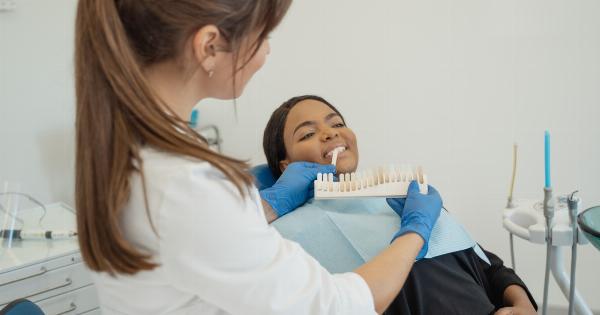Hemorrhoids, also known as piles, are swollen veins in the rectum and anus that can cause discomfort and pain. They can occur internally or externally and are typically caused by increased pressure in the rectal area.
Hemorrhoids are a common condition that can affect both men and women of all ages.
Types of Hemorrhoids
There are two main types of hemorrhoids:.
Internal Hemorrhoids
Internal hemorrhoids occur inside the rectum and are not visible from the outside. They often do not cause any pain or discomfort unless they become prolapsed or thrombosed.
Prolapsed internal hemorrhoids occur when they push through the anus and may cause pain and irritation. Thrombosed internal hemorrhoids are when a blood clot forms inside the hemorrhoid, causing severe pain and swelling.
External Hemorrhoids
External hemorrhoids develop under the skin around the anus and can be felt as a lump. They may cause itching, bleeding, and discomfort, especially during bowel movements or when sitting for prolonged periods.
Causes of Hemorrhoids
The exact cause of hemorrhoids is often not known, but several factors can contribute to their development:.
Straining During Bowel Movements
Straining during bowel movements is one of the most common causes of hemorrhoids. This can occur due to constipation, diarrhea, or the need to pass hard stools. The increased pressure on the rectal area can lead to the development of hemorrhoids.
Pregnancy
Pregnancy can increase the likelihood of developing hemorrhoids due to increased pressure on the veins in the pelvic area. Hormonal changes during pregnancy can also contribute to the development of hemorrhoids.
Obesity
Being overweight or obese can put extra pressure on the veins in the rectal area, increasing the risk of developing hemorrhoids.
Sitting or Standing for Prolonged Periods
Sitting or standing for long periods without taking breaks can increase pressure on the rectal veins and contribute to the formation of hemorrhoids.
Chronic Diarrhea or Constipation
Both chronic diarrhea and constipation can lead to increased straining during bowel movements, which can cause hemorrhoids to develop over time.
Preventing Hemorrhoids
While it may not be possible to prevent hemorrhoids completely, there are several measures you can take to reduce your risk:.
Eat a High-Fiber Diet
Aim to consume a diet rich in fiber, including fruits, vegetables, whole grains, and legumes. Fiber helps soften the stool and makes it easier to pass, reducing the likelihood of straining during bowel movements.
Stay Hydrated
Drinking an adequate amount of water can help promote regular bowel movements and prevent constipation, reducing the risk of hemorrhoids.
Avoid Straining
Avoid straining during bowel movements by taking your time and not rushing. If needed, use stool softeners or fiber supplements to make passing stools easier.
Exercise Regularly
Regular exercise helps improve digestion and promotes healthy bowel movements. It also helps maintain a healthy weight, reducing the strain on the rectal area.
Avoid Prolonged Sitting or Standing
If your job requires long periods of sitting or standing, try to take breaks and move around every hour to reduce pressure on the rectal veins.
Treating Hemorrhoids
Treatment options for hemorrhoids vary based on the severity and symptoms:.
Home Remedies
Mild hemorrhoids can often be treated at home using over-the-counter creams, ointments, or suppositories that help relieve symptoms such as itching and pain. Taking warm baths, using cold packs, and practicing good hygiene can also provide relief.
Medical Procedures
If home remedies do not provide effective relief, your healthcare provider may recommend medical procedures such as:.
Sclerotherapy
This procedure involves injecting a chemical solution into the hemorrhoid to shrink it.
Rubber Band Ligation
A small rubber band is placed around the base of the hemorrhoid, cutting off its blood supply and causing it to wither and fall off.
Infrared Coagulation
A special device is used to apply infrared light to the hemorrhoid, causing it to shrink and eventually disappear.
Hemorrhoidectomy
In severe cases, surgical removal of the hemorrhoid may be necessary.
It’s important to consult with a healthcare professional for an accurate diagnosis and to discuss the best treatment options for your specific condition.






























